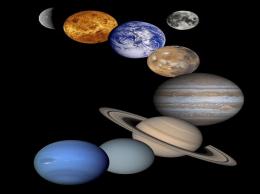While it is virtually impossible to prevent your kids from staring at that TV screen, it is important to maximize the positive aspects of their television watching. Try the following:
1. Check TV listings and program reviews for shows that make for good family viewing. Watch shows together – and then talk about them afterwords. Use the program as a starting-off point to discuss your family’s views and values or to learn more about the subject featured on the program.
2. If you are going to permit your child to watch a program alone (or with friends), watch it first.
3. Check the ratings – these age-group rating tools are there for your benefit
4. Plan a family TV schedule that everyone can agree on – then ensure that the schedule is enforced.
5. Plan fun and interesting alternatives to TV watching – arts and crafts, reading, board games, outdoor activities, a cooking evening – the choices are endless!
Category: Lifestyle
The Health Benefits of Potatoes
 It is often forgotten that potatoes are in fact a very healthy vegetable. They are rich in complex carbohydrates which supply energy, but are relatively low in calories. One medium sized potato also contains around five grams of fiber, which is incredibly healthy for the digestive system. Potatoes are also rich in vitamins and minerals.
It is often forgotten that potatoes are in fact a very healthy vegetable. They are rich in complex carbohydrates which supply energy, but are relatively low in calories. One medium sized potato also contains around five grams of fiber, which is incredibly healthy for the digestive system. Potatoes are also rich in vitamins and minerals.
Potatoes contain the most potassium of all fresh fruits and vegetables, including bananas. One potato has over 800 milligrams, which is close to 20% of the ideal amount to be consumed on a daily basis. Potassium is necessary for body growth and cell maintenance. It’s also important for the functioning of the nervous system, as well as normal muscle contraction, including the heart muscle. It is also an electrolyte which helps to balance fluids in the body.
Potatoes are rich in Vitamin C and B6 as well, which boost the immune system and contribute to the healing of wounds and blood clotting.
Jobs Doll Deal on EBay
Remember that cute Steve Jobs look-alike in plastic which was produced in China without the permission or even the knowledge of Apple’s main man? Recall his dapper jeans, iPhone, removable trademark eyeglasses and sport shoes?
In case you don’t remember, M.I.C. Gadget, headquartered in China, managed to manufacture and sell 300 of the delightful action figures for $99 each before Apple sent a formal complaint to them insisting that the creation of the toy was an “unauthorized use of a person’s name or likeness, subject to a lawsuit under California Civil Code Section 3344.”
Unwilling to go the lawsuit route, G.I.C. halted their manufacture. Now the plastic Jobs doll is a collector’s item, and was recently purchased on eBay at 25 times cost, for $2,500. There are rumors that the sale was bogus, however, something that is not beyond eBay possibilities. Suspicions were aroused due to the fact that there was only one bid on this item, and was sold immediately for the full asking price. Then a few days later another Jobs doll appeared, ready for auction, at the same asking price.
How Much TV does your child watch?
 TV is a ubiquitous part of modern living for everyone – including your average toddler. The amount of TV even our smallest children watch may surprise you. According to the Kaiser Family Foundation (KFF):
TV is a ubiquitous part of modern living for everyone – including your average toddler. The amount of TV even our smallest children watch may surprise you. According to the Kaiser Family Foundation (KFF):
· two-thirds of infants and toddlers watch a screen an average of 2 hours a day
· kids under age 6 watch an average of about 2 hours of screen media a day, primarily TV and videos or DVDs
· kids and teens 8 to 18 years spend nearly 4 hours a day in front of a TV screen and almost 2 additional hours on the computer (outside of schoolwork) and playing video games
How much should they be watching? And how can you transform their screen time into a learning experience? More on that in future postings.
Explaining Saturn’s Rings
 Saturn has been admired since ancient times for its beautiful, mysterious rings, giving it the appearance of a lovely jewel hanging in the heavens above. Many theories have been proposed for the formation of these wonderful rings, the latest of which being that the rings are the remnants of an ancient moon.
Saturn has been admired since ancient times for its beautiful, mysterious rings, giving it the appearance of a lovely jewel hanging in the heavens above. Many theories have been proposed for the formation of these wonderful rings, the latest of which being that the rings are the remnants of an ancient moon.
The theory suggests that Saturn was orbited by a large moon which lost its icy outer layer before its rocky inner part went plunging into the surface of the giant planet. These icy fragments continued to circle the solar system’s second largest planet, eventually spewing off small moons of its own. The estimate for the date of this event is said to be about 4.5 billion years ago.
Robin Canup is a planetary scientist at the Southwest Research Institute in Boulder, Colorado. Ms. Canup explains the logic of the theory in the following way. “Not only do you end up with the current ring, but you can also explain the inner ice-rich moons that haven’t been explained before.”
Canup is the author of the paper detailing particulars of the theory which appears on the December 12th internet edition of the journal Nature.
